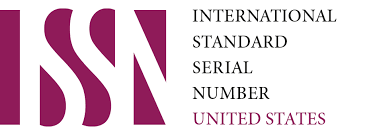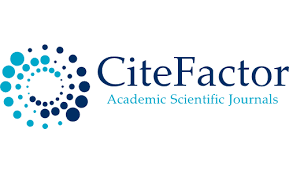"Teaching receptive skills - Teaching in Challenging Circumstances"
DOI:
https://doi.org/10.62480/tjpch.2024.vol30.pp49-54Keywords:
receptive skills, critical thinking, spontaneity, project-based learningAbstract
Teaching receptive skills, including reading and listening, poses unique challenges in environments marked by limited resources, socio-economic disparities, and diverse student needs. This abstract explores effective strategies for educators facing such circumstances. It delves into the adaptation of content, the creation of interactive learning activities, and the cultivation of supportive environments to foster student engagement and comprehension. Additionally, it examines the integration of technology, the importance of differentiation and cultural sensitivity, and the benefits of collaboration with communities. Through these strategies, teachers can navigate challenging circumstances with resilience, ensuring that all students have the opportunity to develop their receptive skills and succeed academically.
References
Banks, J. A. (2019). Cultural diversity and education: Foundations, curriculum, and teaching (7th ed.). Routledge.
Bell, S. (2010). Project-based learning for the 21st century: Skills for the future. The Clearing House: A Journal of Educational Strategies, Issues and Ideas, 83(2), 39-43.
Brookfield, S. D., & Preskill, S. (2005). Discussion as a way of teaching: Tools and techniques for democratic classrooms (2nd ed.). Jossey-Bass.
Bryk, A. S., Gomez, L. M., Grunow, A., & LeMahieu, P. (2010). Learning to improve: How America’s schools can get better at getting better. Harvard Education Press.
Butler, J., Schnellert, L., & Cartier, S. C. (2018). Collaborative inquiry in teacher professional development. In International handbook of teacher education (pp. 685-712). Springer.
Dweck, C. S. (2006). Mindset: The new psychology of success. Random House.
Doyle, W., & Ponder, G. A. (1977). The practicality ethic in teacher decision making. Interchange, 8(1), 1-12.
Epstein, J. L., Sanders, M. G., Simon, B. S., Salinas, K. C., Jansorn, N. R., & Van Voorhis, F. L. (2009). School, family, and community partnerships: Your handbook for action (3rd ed.). Corwin Press.
Fletcher, S. H., & Mullen, C. A. (2012). The role of teacher mentoring in educational reform. The New Educator, 8(3), 206-223.
Fullan, M. (2014). The principal: Three keys to maximizing impact. John Wiley & Sons.
Gay, G. (2002). Preparing for culturally responsive teaching. Journal of Teacher Education, 53(2), 106-116.
Guskey, T. R., & Yoon, K. S. (2009). What works in professional development? Phi Delta Kappan, 90(7), 495-500.
Hargreaves, A., & Fullan, M. (2012). Professional capital: Transforming teaching in every school. Teachers College Press.
Harris, A., & Muijs, D. (2005). Improving schools through teacher leadership. McGraw-Hill Education.
Herrera, L., McMasters, C., Kowitt, J., & Laffey, J. (2014). Role-play simulations: Interactive strategies for improving student engagement and understanding in research ethics. Journal of Microbiology & Biology Education, 15(2), 258-266.
Johnson, D. W., & Johnson, R. T. (2009). An educational psychology success story: Social interdependence theory and cooperative learning. Educational Researcher, 38(5), 365-379.
Krajcik, J. S., Blumenfeld, P. C., Marx, R. W., Bass, K. M., Fredricks, J., & Soloway, E. (1998). Inquiry in project-based science classrooms: Initial attempts by middle school students. The Journal of the Learning Sciences, 7(3-4), 313-350.
López, C. M., Johnson, S. R., & Berger, N. (2019). Building resilience and reducing risk: How educators support students affected by trauma and stress. Teaching and Teacher Education, 86, 102894.
Mayer, R. E. (2005). Introduction to multimedia learning. In R. E. Mayer (Ed.), The Cambridge handbook of multimedia learning (pp. 1-16). Cambridge University Press.
Michaelsen, L. K., Knight, A. B., & Fink, L. D. (2004). Team-based learning: A transformative use of small groups in college teaching. Stylus Publishing, LLC.
Nieto, S., & Bode, P. (2018). Affirming diversity: The sociopolitical context of multicultural education (7th ed.). Pearson.
Palincsar, A. S. (1998). Social constructivist perspectives on teaching and learning. Annual Review of Psychology, 49(1), 345-375.
Pamplin, A., Nokes-Malach, T. J., Kitsantas, A., & Miller, A. (2020). Self-regulated learning in a resource-scarce context: A qualitative exploration of university students' experiences in Malawi. Learning and Individual Differences, 79, 101849.
Puentedura, R. R. (2014). SAMR: A model for technology integration. Retrieved from http://www.hippasus.com/rrpweblog/archives/2014/06/29/SAMRABriefIntroduction.pdf
Rose, D. H., & Meyer, A. (2002). Teaching every student in the digital age: Universal design for learning. Association for Supervision and Curriculum Development.
Seligman, M. E., Ernst, R. M., Gillham, J., Reivich, K., & Linkins, M. (2019). Positive education: Positive psychology and classroom interventions. Oxford University Press.
Skinner, E. A., Kindermann, T. A., & Furrer, C. J. (2016). A motivational perspective on engagement and disaffection: Conceptualization and assessment of children's behavioral and emotional participation in academic activities in the classroom. Educational and Psychological Measurement, 66(4), 634-654.
Thomas, J. W. (2000). A review of research on project-based learning. Autodesk Foundation.
Tomlinson, C. A. (2001). How to differentiate instruction in mixed-ability classrooms (2nd ed.). Association for Supervision and Curriculum Development.
Tomlinson, C. A. (2014). The differentiated classroom: Responding to the needs of all learners (2nd ed.). Association for Supervision and Curriculum Development.
UNESCO. (2017). Education for people and planet: Creating sustainable futures for all. Global Education Monitoring Report, 2016.
Warschauer, M. (2003). Technology and social inclusion: Rethinking the digital divide. The MIT Press.
Downloads
Published
Issue
Section
License

This work is licensed under a Creative Commons Attribution-NonCommercial 4.0 International License.
User Rights
Under the Creative Commons Attribution-NonCommercial 4.0 International (CC-BY-NC), the author (s) and users are free to share (copy, distribute and transmit the contribution).
Rights of Authors
Authors retain the following rights:
1. Copyright and other proprietary rights relating to the article, such as patent rights,
2. the right to use the substance of the article in future works, including lectures and books,
3. the right to reproduce the article for own purposes, provided the copies are not offered for sale,
4. the right to self-archive the article.












